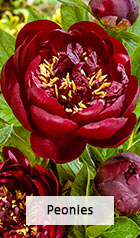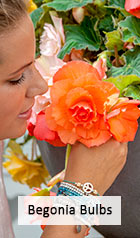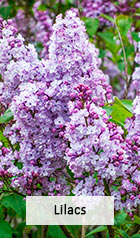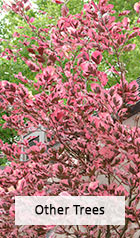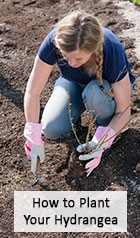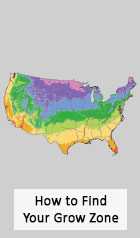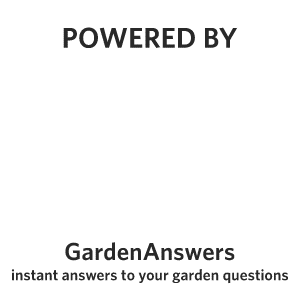- Fall Preview
- Perennials
Close X
Reliable color year after year.
- Bulbs
Close X
Fill your summer with blooms.
- Clematis & Vines
Close X
Provide ambiance and romance.
- Shrubs
Close X
Habitat, color & design possibilities.
- Trees
Close X
A gift for the next generation.
- Patio Orchard
- Fruits
- Tools & Décor
Close X
The right tools make gardening a pleasure.
- Spring Clearance
- Gardening Resources
Close X
Tips and tricks for easy, beautiful gardens.
Lavender
Lavender

About Lavender
Growing lavender is super easy and provides plenty of flowers to enjoy in the garden, as well as in the home. When to plant lavender depends largely on your hardiness zone. In most parts of the country, spring and fall plantings are safe bets. In fact, in many areas, November is an ideal fall choice because the plants are able to acclimate to the cold without the danger of a hard freeze before they go dormant for the winter. "When does lavender bloom?" is an easier question to answer. These amazing plants produce flowers from midsummer to fall.
Once your Lavender plant grows and blooms, you will have ample flowers at hand to use in lavender essential oil, potpourri, sachets and even baking, if the plants were grown without sprays. The blooms are actually clusters of small, seedlike florets that have a subtle lavender color. The signature fragrance is known to have a calming effect and is often used as a sleep aid.
Many gardeners ask, "is lavender safe for cats and dogs?" Though lavender plants do contain small amounts of a toxic compound called linalool, it is found in such small concentrations that toxicity is rarely an issue. Your dog or cat would have to ingest quite large amounts of lavender in order for this to become a problem. Still, a watchful eye on your pets is still a good idea.
How to grow lavender?
The plants need a full sun to part shade site, and they thrive in afternoon sun. Other than that, very little needs to be done. Lavender is quite tolerant of adverse weather conditions such as drought, heat and wind.
Many gardeners have learned how to grow lavender in a pot so they can move the pots around to get the best sun and adequate shelter, if needed. We suggest a large pot (12-16" containers work well) with an inch or two of gravel at the bottom and planting in a quality potting mix. And though growing outdoors is preferable, if you want to start with seeds, it is advisable to learn how to grow lavender indoors, too.
By using a seed-starting kit or bio-dome, it is simply a matter of sowing the lavender seeds in late winter. When sowing, it is best to barely cover the seeds with potting medium as they need light to properly germinate. Place the tray or pots in a warm spot and the seeds will germinate in roughly 15-20 days. Now you know how to grow lavender from seeds--it's just that easy!
How to harvest lavender?
Harvesting and drying lavender seeds for use in potpourris, sachets, and even added to bath water, is easy and done right, will allow you to cut and come again throughout the growing season. Because lavender can be harvested while in bloom, it's a simple task to snip stems after the flowers fade a bit. But the best time is when buds have formed, but not yet opened. This is when the lavender flowers will fall off more easily.
Once you have gathered your stems, tie them together and hang the bundles in a warm area away from sunlight. When dried, lavender buds can be added to other herbs, dried fruits and fragrant flowers to create amazing potpourri mixes. When using flowers in lavender oil, harvest in spring or early summer before the buds open. The fragrance of these closed blooms is more intense and will last longer in infusions, extractions and distillations.
There are so many ways to enjoy lavender, you'll be hard pressed to choose just one application. So we suggest a liberal planting of this versatile herb so you'll have plenty of blooms to go around.
What are the Different Types of Lavender?
The types of lavender available on the market are many, and each one boasts its own unique attributes. Lavender comes in different colors and sizes, making it a perfect plant for nearly every garden. So, not only can you choose from blue lavender or pink lavender, there are also different species that deserve a closer look.
English lavender, for example, is a tough, hardy plant that is a reliable bloomer that requires little care or maintenance. Choose Phenomenal lavender for its adaptability to both very cold winters and hot, humid summers. It is also a go-to option for drying and use in potpourri. For gardeners with small spaces to fill, Hidcote lavender is just the ticket. Compact plants grow to only 12" tall, but still produce lots of fragrant, purple-blue flowers.



